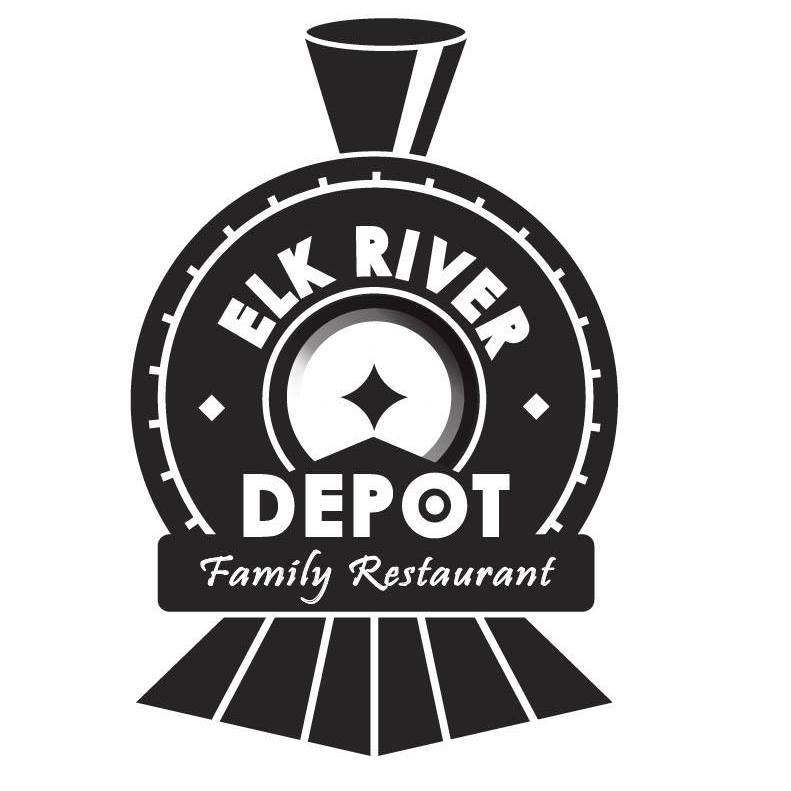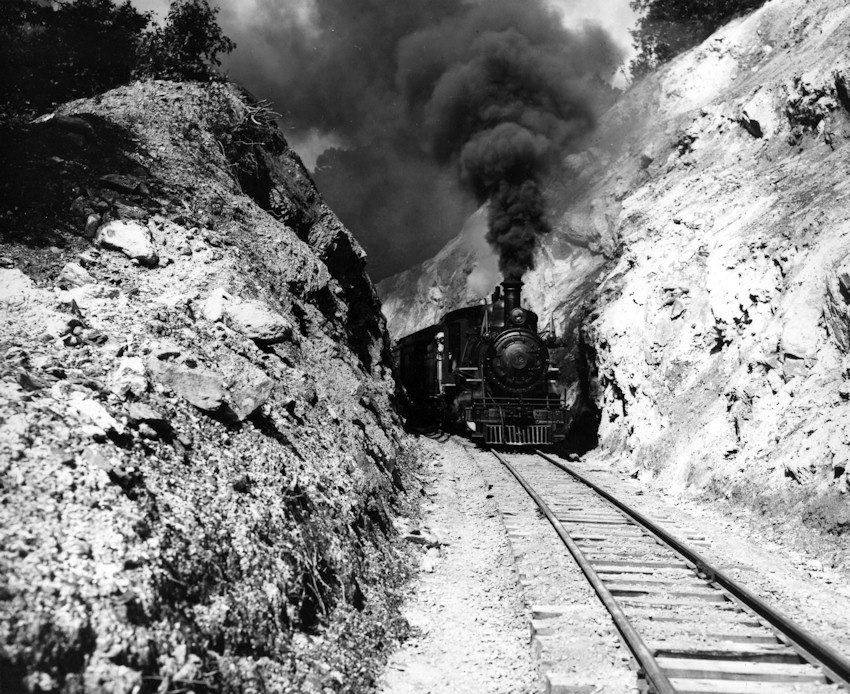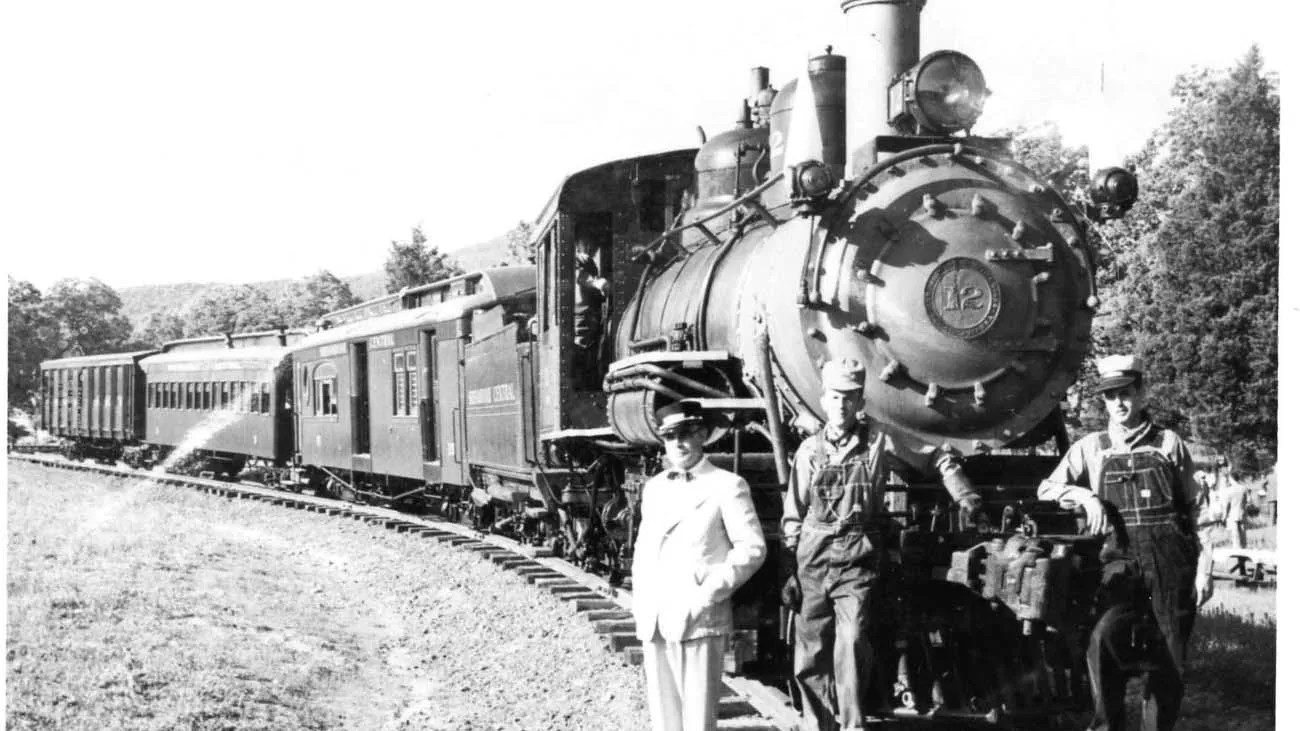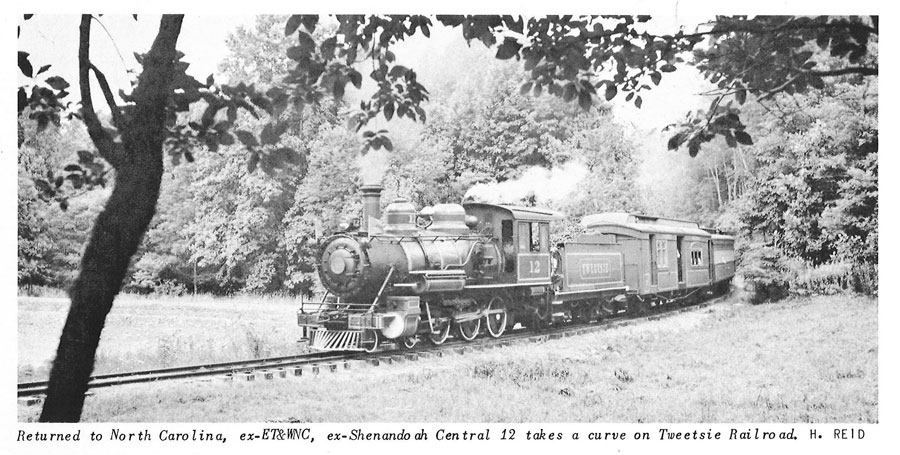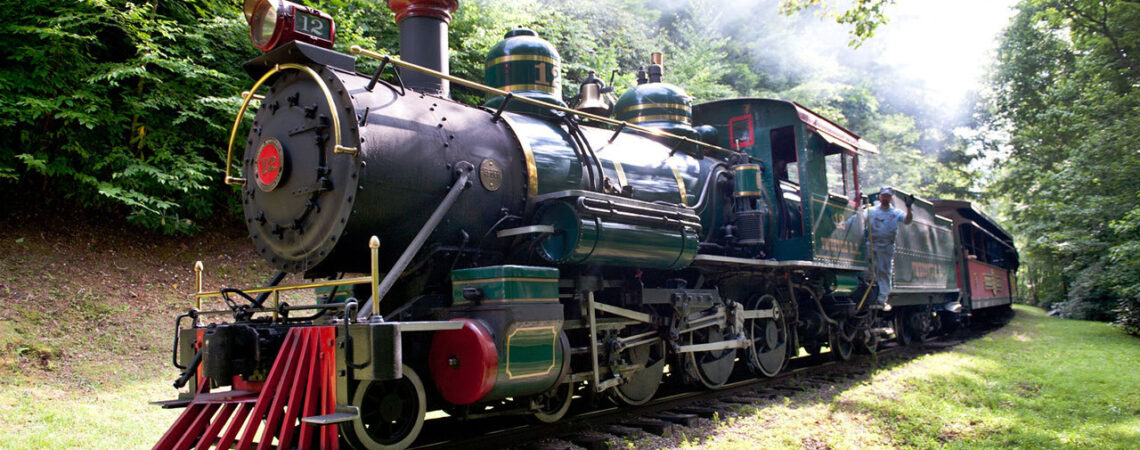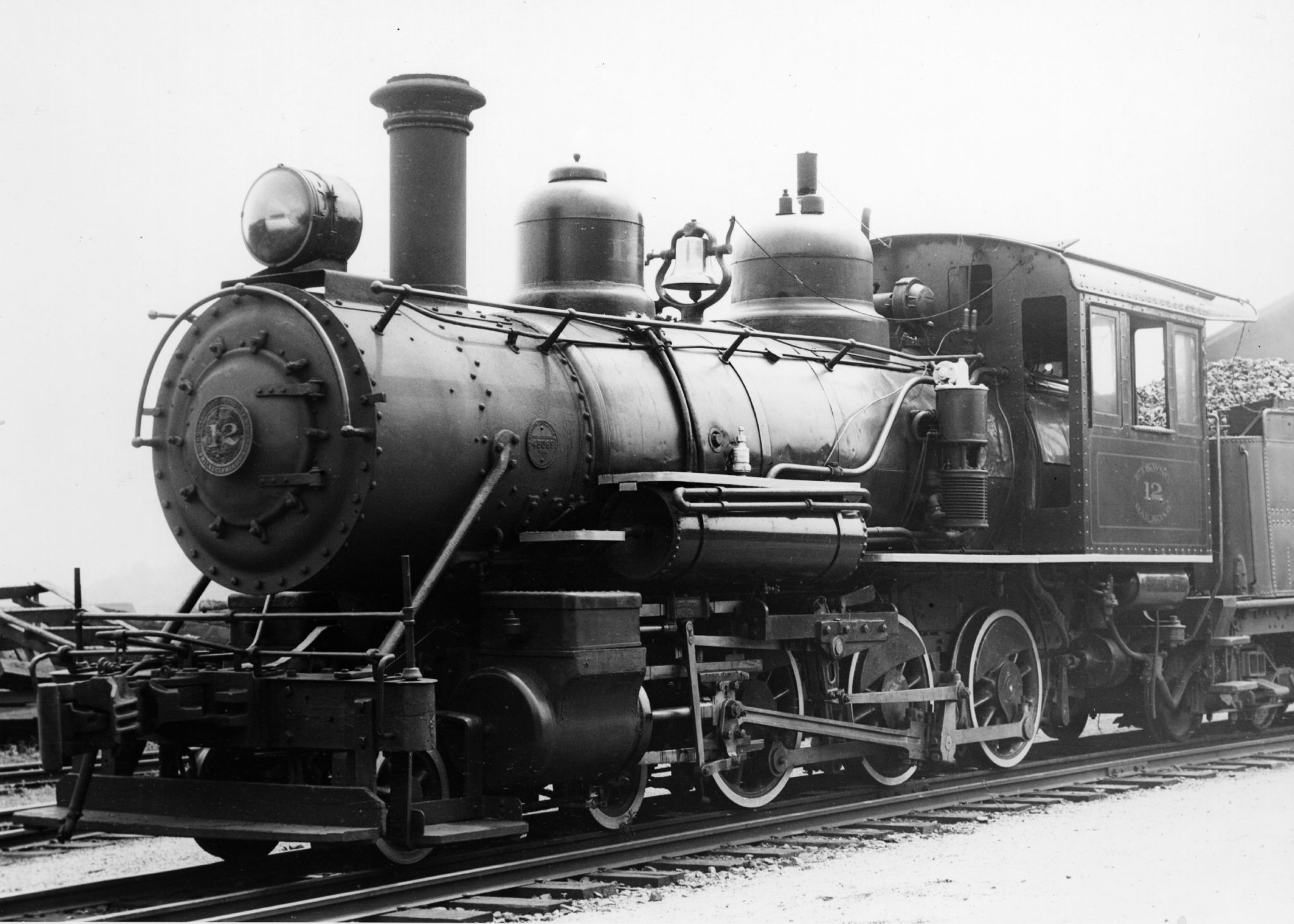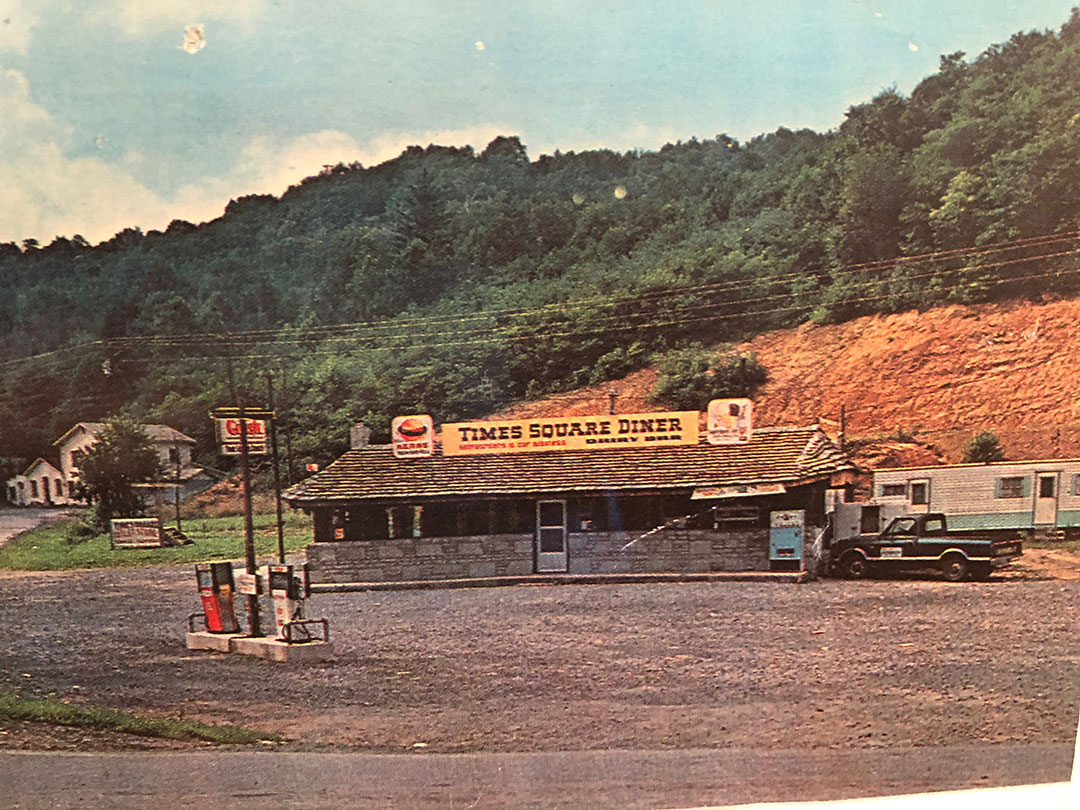ABOUT THE DEPOT
Elk River Depot History
A Brief History Of The East Tennessee & Western North Carolina Railroad
While the East Tennessee & Western North Carolina had a very long name it wasn’t a particularly large system at any point in its history. The ET&WNC’s history begins in 1866 when it was originally chartered that year by the Tennessee General Assembly to connect Johnson City, Tennessee with Cranberry, North Carolina (a distance of around 32 miles) deep within the isolated Blue Ridge Mountains to serve the Tarheel State’s western timber industry and iron mines. Unfortunately, a lack of any serious type of financial backing precluded any construction attempts and resulted in the charter being left undisturbed for nearly 20 years.
Then in 1873 the railroad was acquired by financier Ario Pardee through his Cranberry Iron & Coal Company. Under Pardee’s guidance the route was opened between Johnson City and Hampton, Tennessee on August 22, 1881. This 14.1-mile section was extended to Cranberry by July 3, 1882 giving the railroad a total system of 34 miles; soon it was doing quite well moving primarily iron and timber from North Carolina with interchanges at Johnson City available via the Southern Railway and Carolina, Clinchfield & Ohio Railway (later known as just the Clinchfield).
There, the railroad also served the Cranberry Furnace (which forged pig iron). The route was built to three-foot, narrow-gauge standards to reduce construction costs and more easily navigate the rugged Blue Ridge.
While the ET&WNC did have grades as high as 3% and 4% overall it was masterfully engineered line designed by engineer Thomas Matson.
Early on the railroad became well-known by locals for its kindheartedness (giving it another name as the Railway with a Heart, it even used heart-shaped punches for its tickets), which carried on throughout the years. For instance, during lean times such as the Great Depression the railroad helped out by offering folks free trips to wherever they were going.
Through World War I little changed for the ET&WNC until it opened a 32-mile extension to the northeast at Boone, North Carolina known as the Linville River Railroad in 1919. Overall, he Tweetsie (or its other nickname as the “Eat Taters & Wear No Clothes” Railroad) was a 66-mile railroad during peak operations with two very short branches in the Tarheel State that connected Minneapolis and Pineola. At this time freight traffic consisted of not only iron and timber but also furniture, other wood products, tanneries, brick, and agriculture.
There were also two rayon plants that sprang up around Elizabethton, which offered the railroad additional traffic (rayon is a type of fiber used in the textile industry). While the ET&WNC did offer passenger services the railroad was unique in that in never operated scheduled passenger trains year-round, only during the summer months.
Despite this setup, due to the breathtaking beauty of the mountains and scenery along the tracks thousands of tourists were drawn to the property annually to ride the trains.
for power, the company used primarily, narrow-gauge 4-6-0 ten-wheelers although it also operated small 0-8-0 switchers as well.
The decline of the East Tennessee and Western North Carolina Railroad began in 1940 when historic flooding along the Linville River Railroad east of Cranberry forced the entire section to be abandoned due to little online traffic (aside from curious tourists) and the cost of re-pairs. The Interstate Commerce Commission approved the decision on March 22 of that year and the Tweetsie again became just a 34-mile system.
While World War II offered the ET&WNC strong traffic this rapidly declined following the conflict as the local remaining iron and timber industry disappeared. With no reason to continue operating its route between Elizabethton and Cranberry, the section was abandoned with the final train operating the line on a warm but somber October 16, 1950.
What remained was about a 10-mile section between Johnson City and Elizabethton that primarily served the rayon plants and had already been operating as a dual-gauge line for several years.
Through the 1960s the railroad continued to use steam power (#207-208), two former Southern 2-8-0 Consolidations it acquired in 1952. The company finally decided to switch to diesel locomotives when it swapped its 2-8-0s with the Southern for a pair of Alco RS3s, #209-210.
The railroad would also pick up two former Southern Pacific RS32s, #211-212. During the diesel era the company’s livery was nothing fancy, consisting of a simplified version of the former Southern freight scheme; black with an orange lower stripe and gold numbering/ lettering.
In 1983 the East Tennessee and Western North Carolina Railroad name disappeared forever when the property was purchased by the Green Bay Packaging Company and renamed it as the East Tennessee Railway. Today, the line is still known by the same except it now a part of the Genesee & Wyoming family of short lines which connections to both Class Is CSX Transportation and Norfolk Southern.
Its current power no longer consists of Alcos and consists of two SW1200s along with a single GP8. Interestingly, one of the ET&WNC’s steamers was saved following the closure of the narrow-gauge lines in 1950 and today operates on the Tweetsie Railroad, 4-6-0 #12.
(Thanks to Tennessee Narrow Gauge from the December, 1942 issue of Trains as well as Tweetsie’s Last Trip by Jack Alexander from the January, 1951 issue as primary references for this article.)
Restaurant Depot History
The Elk River Depot used to be a diner named Times Square, open for almost 90 years
Time Square was an all american bistro restaurant, bits and pieces of the mountains, good home cooking, comfort food, mixed flavors from your travels across the United States.
Restaurant started as a closed down stop on the tweetsie railroads, diner in a caboose.
Leave A Review
Leave a Review on GOOGLE
Leave a Review on FACEBOOK
Leave a Review on YELP
Leave a Review on TRIP ADVISOR
Contact Us
Hours of Operation:
Monday – CLOSED
Tuesday – 11:00am-8:00pm
Wednesday – 11:00am-8:00pm
Thursday – 11:00am-8:00pm
Friday – 11:00am-8:00pm
Saturday – 11:00am-8:00pm
Sunday – 11:00am-3:00pm
Breakfast Served
Saturday – 8:00am-11:00pm
Sunday – 8:00am-11:00pm
